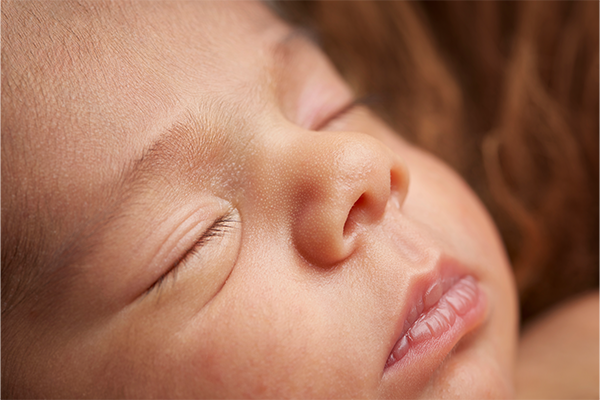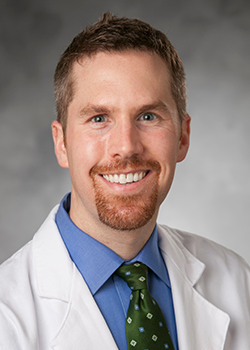
Children under age five face an average of six to eight respiratory infections a year. As we age, we develop the ability to ward off more infections, but for the younger population, these respiratory infections often become serious, even life-threatening. Globally, over 700,000 kids die each year of pneumonia.
Matthew Kelly, MD, MPH, associate professor of pediatrics, is working to find ways to help our youngest population avoid more respiratory diseases. One possible solution, he says, is the nasal microbiome.
Our bodies are filled with our own special blend of microorganisms including bacteria, viruses, fungi, and other microbes, collectively known as a microbiome, that play essential roles in maintaining health by contributing to digestion, immune system function, and fighting harmful pathogens.
Babies, though, haven’t had time to develop flourishing microbiomes. Their immature microbiomes make them less able to fight off infections, but if they could get exposed to beneficial bacteria early, they may be better able to avoid respiratory infections.
“The microbes that colonize our bodies provide a natural resistance to potential pathogens,” Kelly said. Like a hotel, there are only so many rooms or spaces for microbes to fit. If the nose hotel is fully booked with good microbes, pathogens are met with a no vacancy sign.

“Pathogens are competing for nutrients and space with other microbes in the nose,” Kelly said. “If you can prevent them from establishing themselves in the nose, they never have the opportunity to spread to other areas to cause pneumonia, ear infections, or other respiratory infections.”
Kelly is focused on identifying microbes that are part of the normal health-promoting flora in our microbiome and thinks a nasal probiotic could give kids an influx of good microbes, which would, in turn, help kids build a natural resistance against unwanted bacterial guests in the nasal microbiome.
One target for that probiotic is Dolosigranulum, a bacterium that almost exclusively colonizes humans and is adapted to live in our nasal passages. “Dolosigranulum is a bacterium that is associated with health,” Kelly said. “It is present in the upper respiratory tract, and we and others have shown that kids who have higher levels of Dolosigranulum in their noses are less likely to have respiratory infection symptoms or to be colonized by certain pathogens.”
At this point, if a nasal probiotic were developed, researchers don’t know if it could be given to infants once shortly after birth or if repeated doses over the first years of life, much like a regular vaccine schedule, would be necessary.
Currently, Kelly and his team are conducting studies that follow kids over time, seeing them every couple of weeks, and sampling their upper respiratory tracts. They have found rapid shifts in the bacteria present in the nasal microbiome, and in babies, extensive variability in what microbes are present in their upper respiratory tracts at the same age. Some of this variability can be attributed to whether the infant is breastfed, delivered by C-section or vaginally, or if they have had respiratory virus infections that can disrupt their microbial.
“On an individual level, infants, children, and even adults have dramatically different respiratory microbiomes,” Kelly said. “Our research shows that in infants, this variability affects the likelihood of these pathogens being able to colonize the upper respiratory tract and, presumably, from there spread to cause other infections.”
In the lab, Kelly’s group is using human cell models to look at health-promoting bacteria and pneumonia pathogens to see if the healthy strains prevent the pneumonia pathogens from colonizing. “That model gets us a little bit closer to what we think might be happening in the upper respiratory tract,” Kelly said.
In a collaboration with Wake Forest University, they are also using mouse models for several pathogens that cause pneumonia and respiratory infections in children. They are determining if putting healthy bacteria into the upper respiratory tract of an infant mouse will prevent it from being colonized by pathogens or if they can eliminate pathogens that have already colonized the respiratory tracts of mice.
There is still a lot we don’t yet know about the nasal microbiome, but one thing seems certain: the nasal microbiome is an important factor in our health.
“If we can put young children on a microbiome trajectory that’s healthier and gives them a natural resistance to being colonized by certain pathogens,” Kelly said, “that could prevent infections and save lives.”